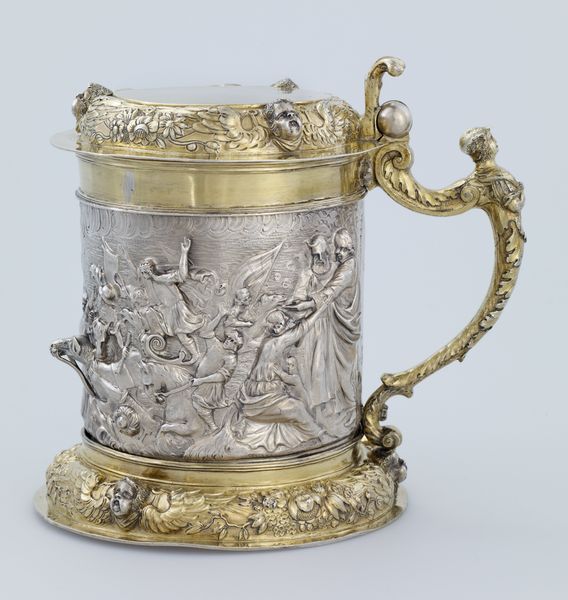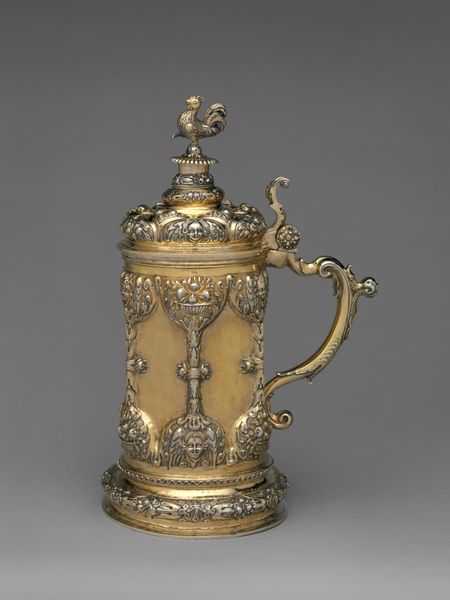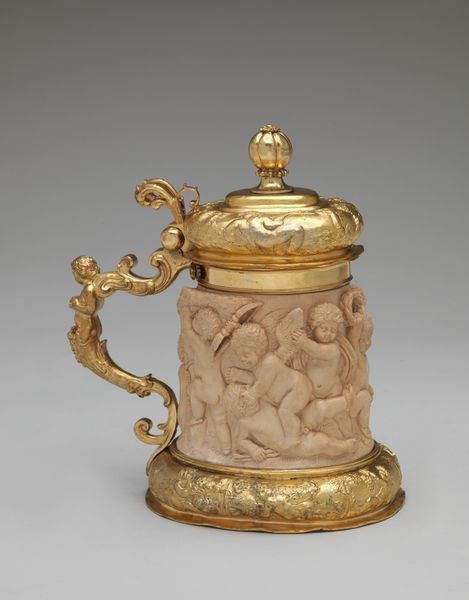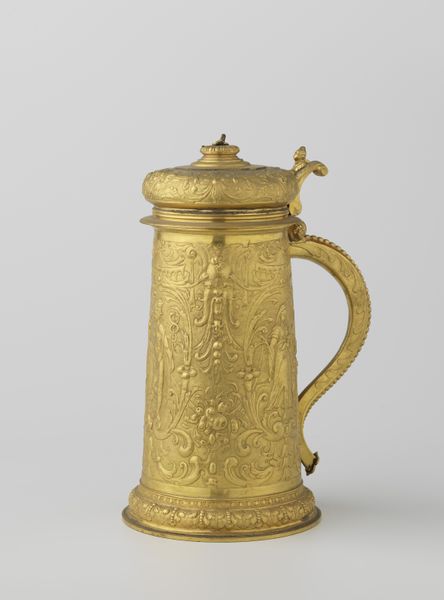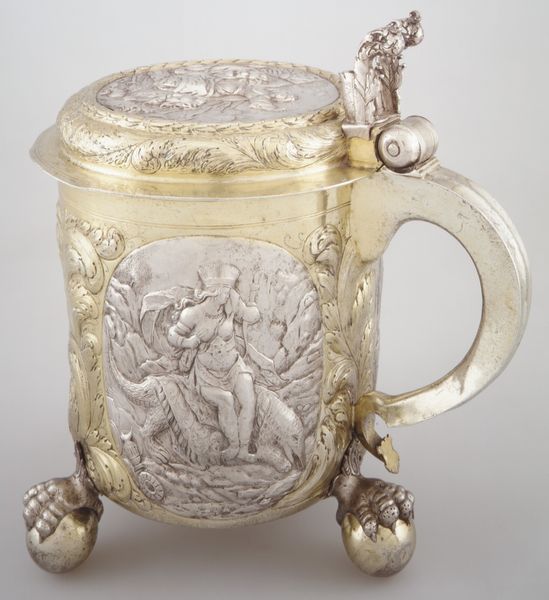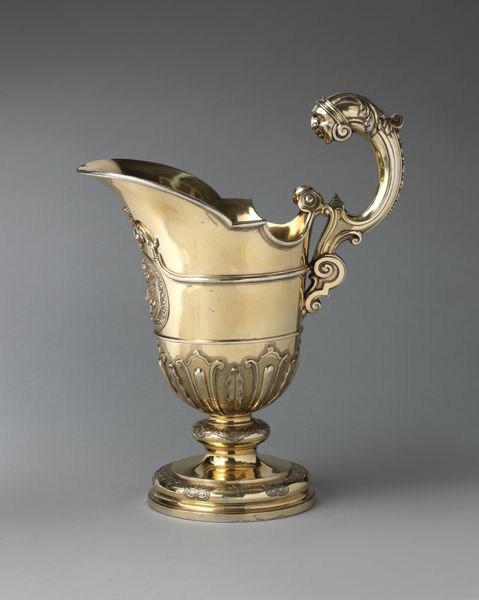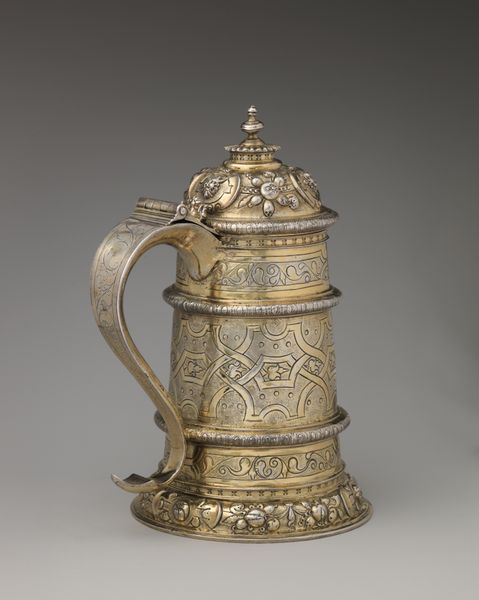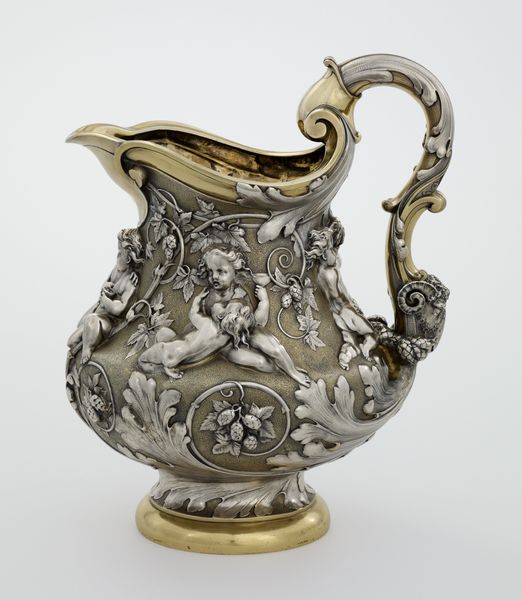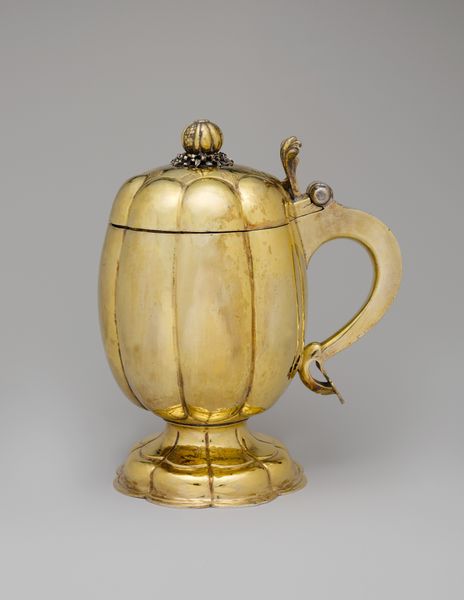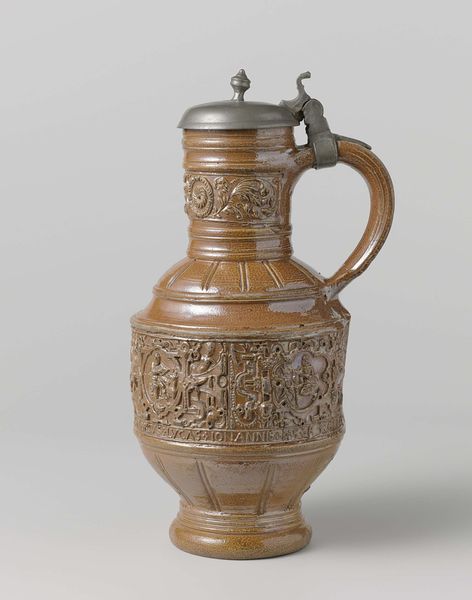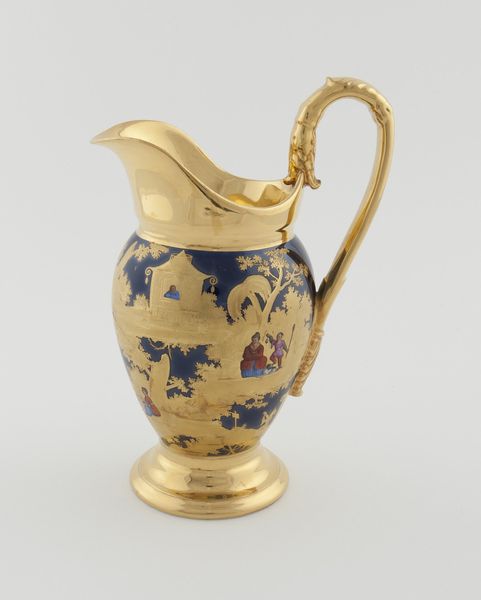
metal, relief, ceramic, sculpture
#
animal
#
metal
#
relief
#
ceramic
#
flower
#
stoneware
#
sculpture
#
horse
#
ceramic
#
decorative-art
Dimensions: Overall (confirmed): 15 3/4 × 10 1/2 × 10 1/2 in. (40 × 26.7 × 26.7 cm)
Copyright: Public Domain
Editor: This gilded "Flagon," from the 19th century and crafted by Elkington & Co., just shimmers. It's so ornate, with these raised animals and floral patterns. What strikes me most is the horse and wild boar. What symbols or cultural memories do you see in this work? Curator: The deliberate combination of specific animals woven amidst flowers evokes rich symbolism, connecting the natural world with the ritual of feasting. Think of the boar: it often represents courage, virility, even sacrifice. Its inclusion here speaks to a complex understanding of strength. The horse might suggest nobility or swiftness. But what happens when they're intertwined with the image of delicate flowers? Editor: So the juxtaposition matters...the contrast emphasizes both aspects? I suppose the boar is caught between courage and inevitable death. Curator: Precisely. It speaks to the Victorian era's fascination with allegories. But also, it prompts us to consider our own relationship to power and vulnerability, reflected in these animal archetypes. Consider how this "Flagon," a vessel for drink, now acts as a vessel for potent, often contradictory, ideas about existence. It's also a continuity of memory, reaching back to the classical hunting scenes depicted on ancient Greek vases. What do you make of the heavy gilding? Editor: It definitely elevates its status, doesn't it? Almost suggesting an elevated position to these simple pastoral images. Is it supposed to communicate royalty or reverence for the scene itself? Curator: Both, I'd argue. By using precious metal, it imbues these animals with enduring importance, but that reverence has an artificial quality as well. Something about memorializing it in such shiny decorative style cheapens it at the same time. We can easily grasp these archetypes as consumers rather than believers. Editor: I see what you mean! I initially saw this as just a pretty object, but now, with your reading of the animals and materials, it's really quite complex. Curator: Indeed. It’s a small microcosm of cultural memory, waiting to be decoded and re-experienced.
Comments
No comments
Be the first to comment and join the conversation on the ultimate creative platform.

